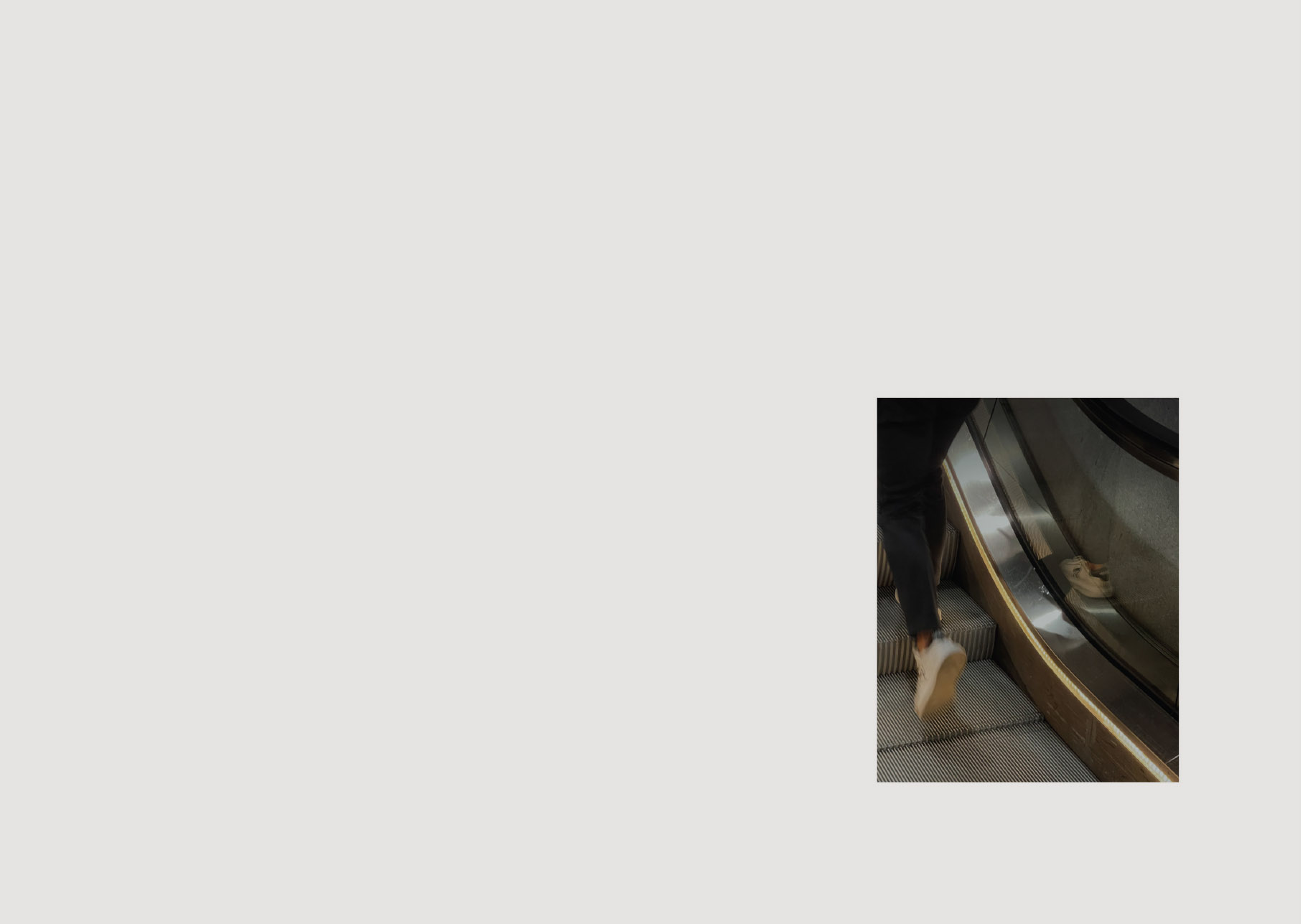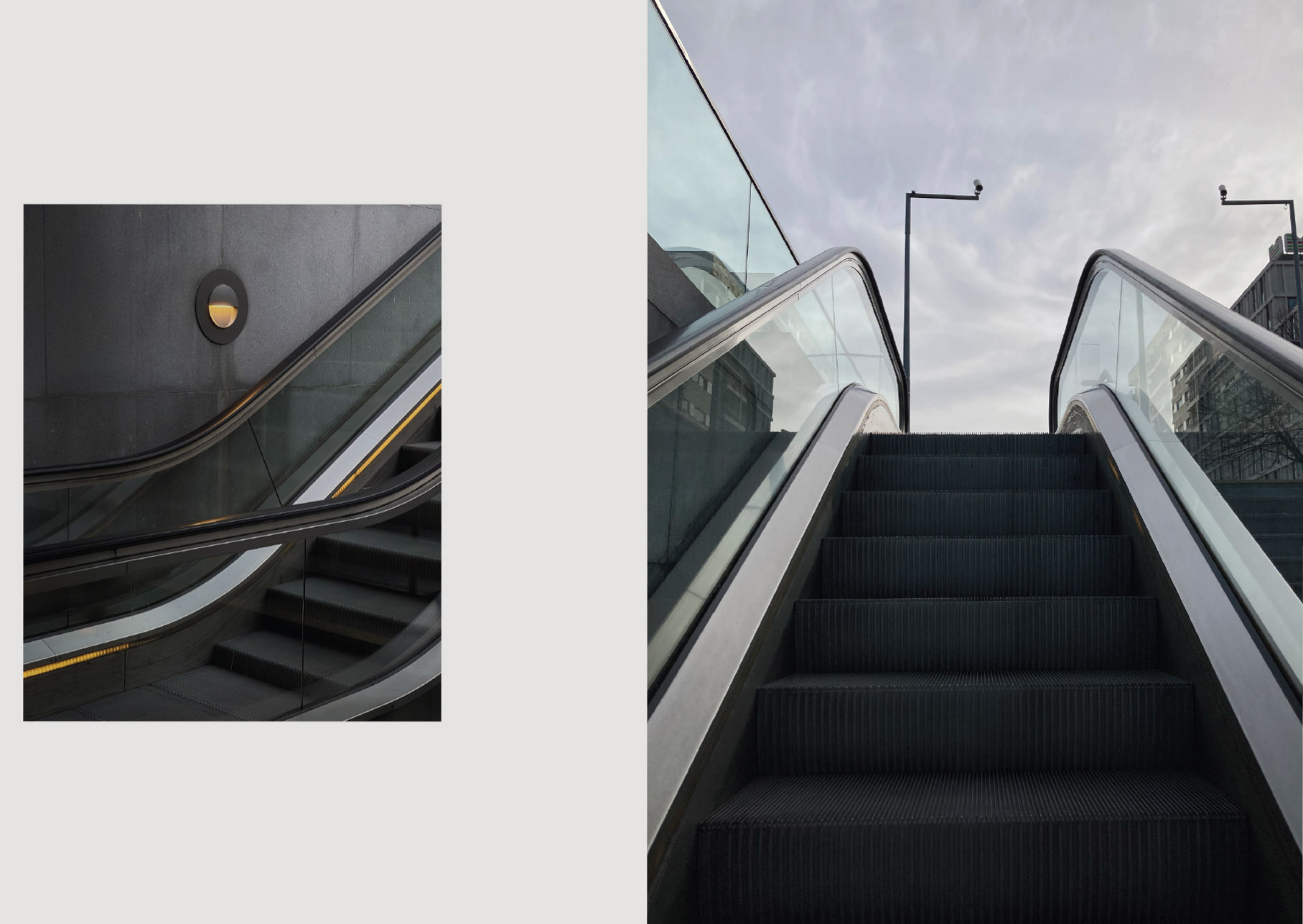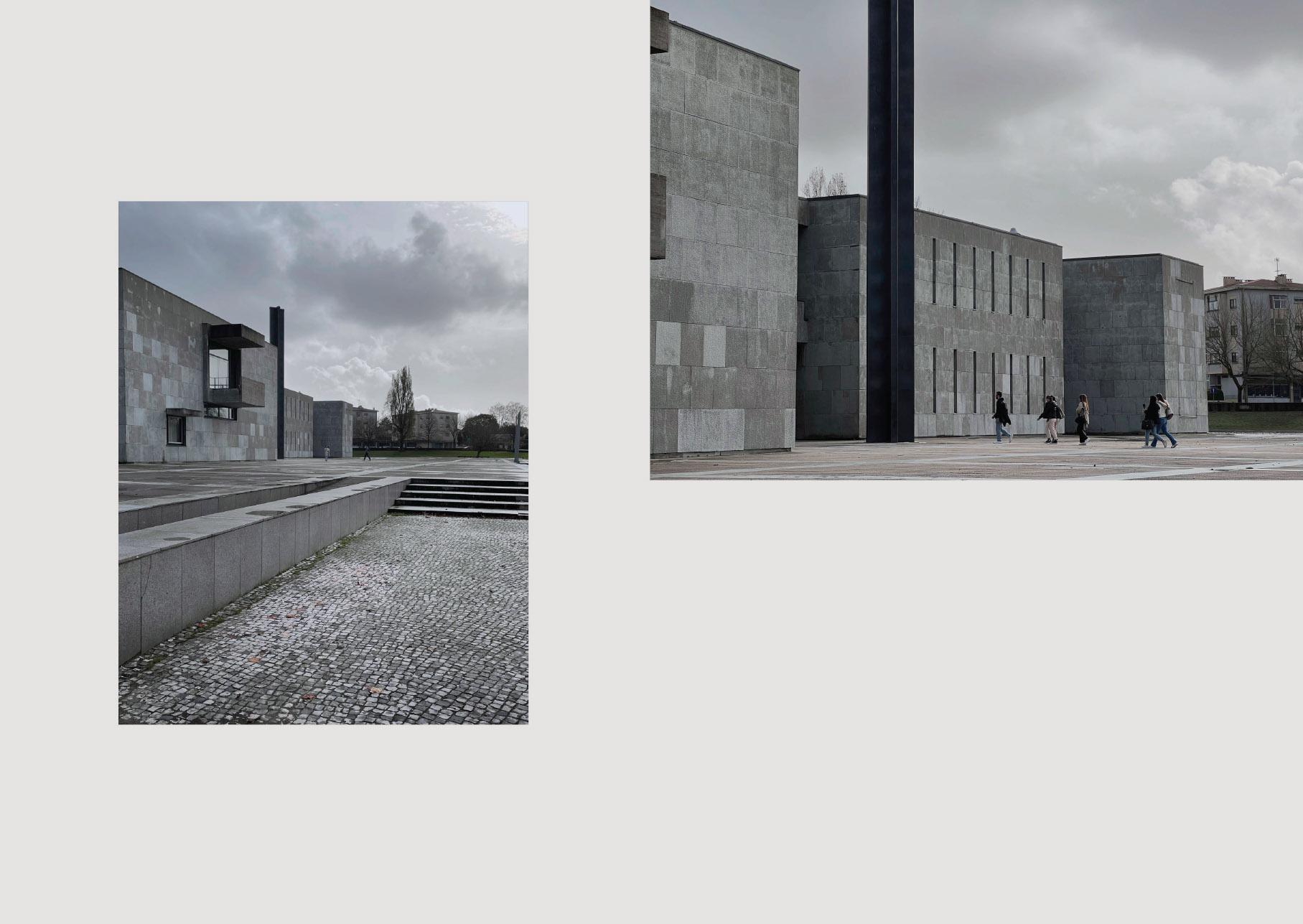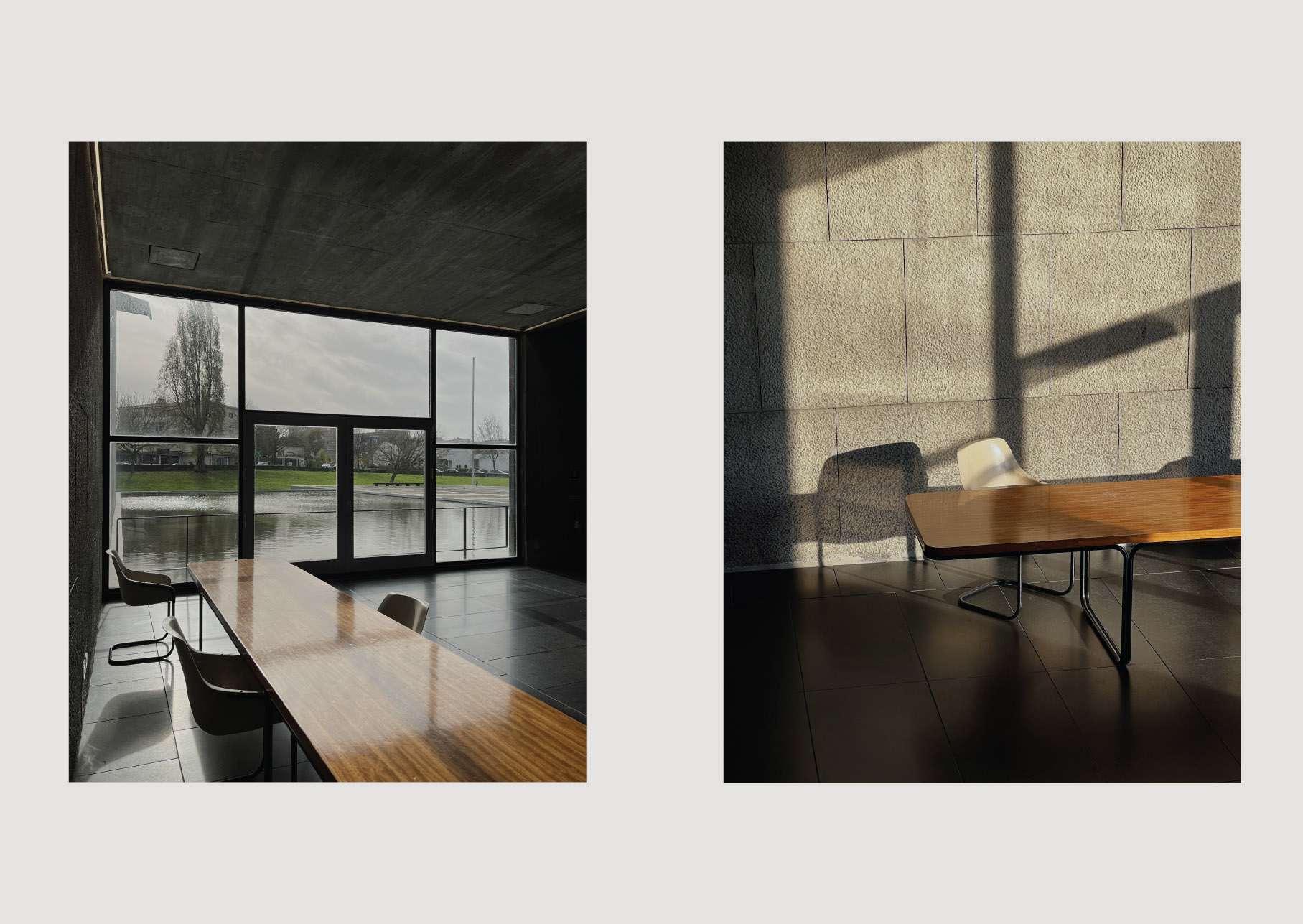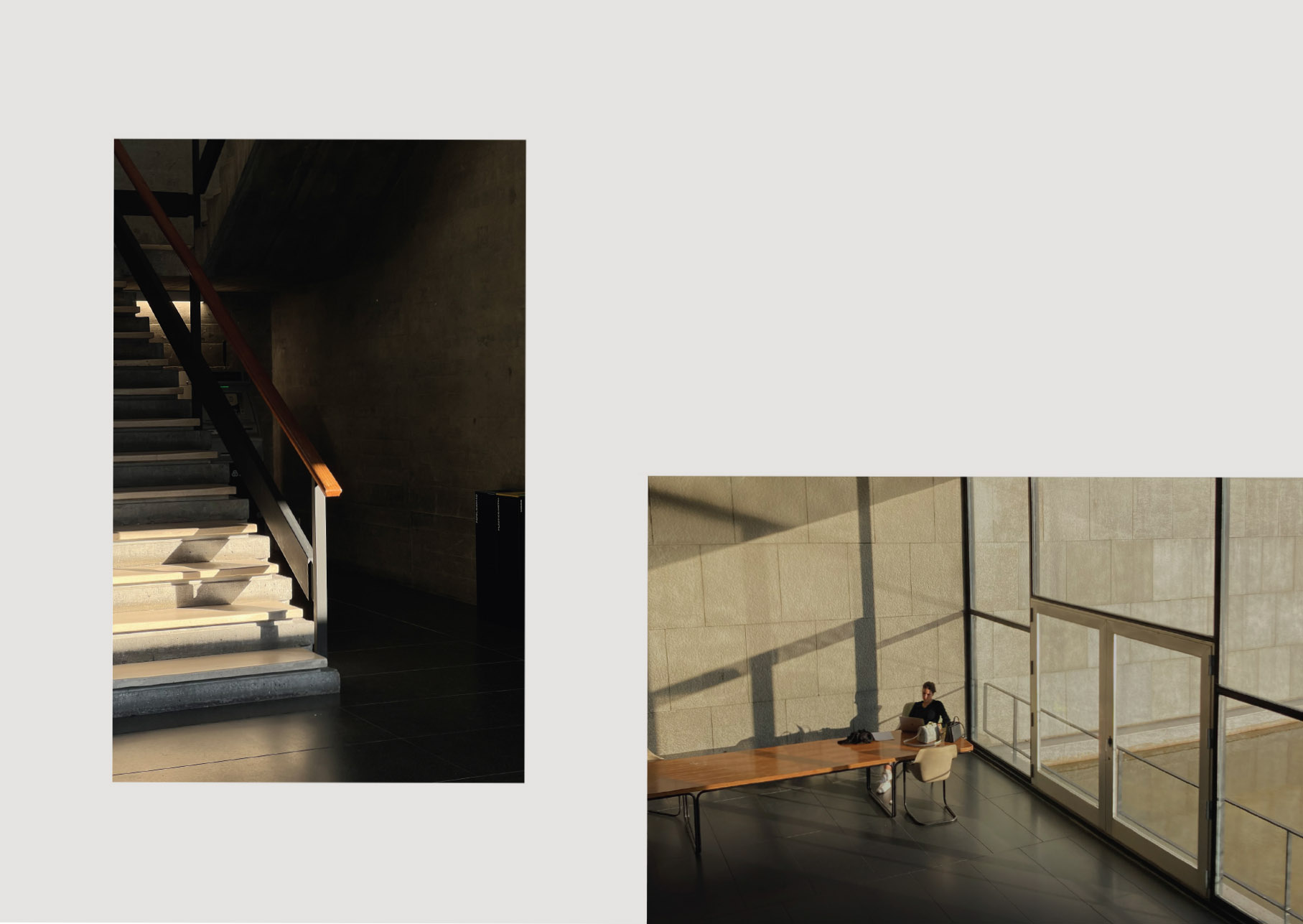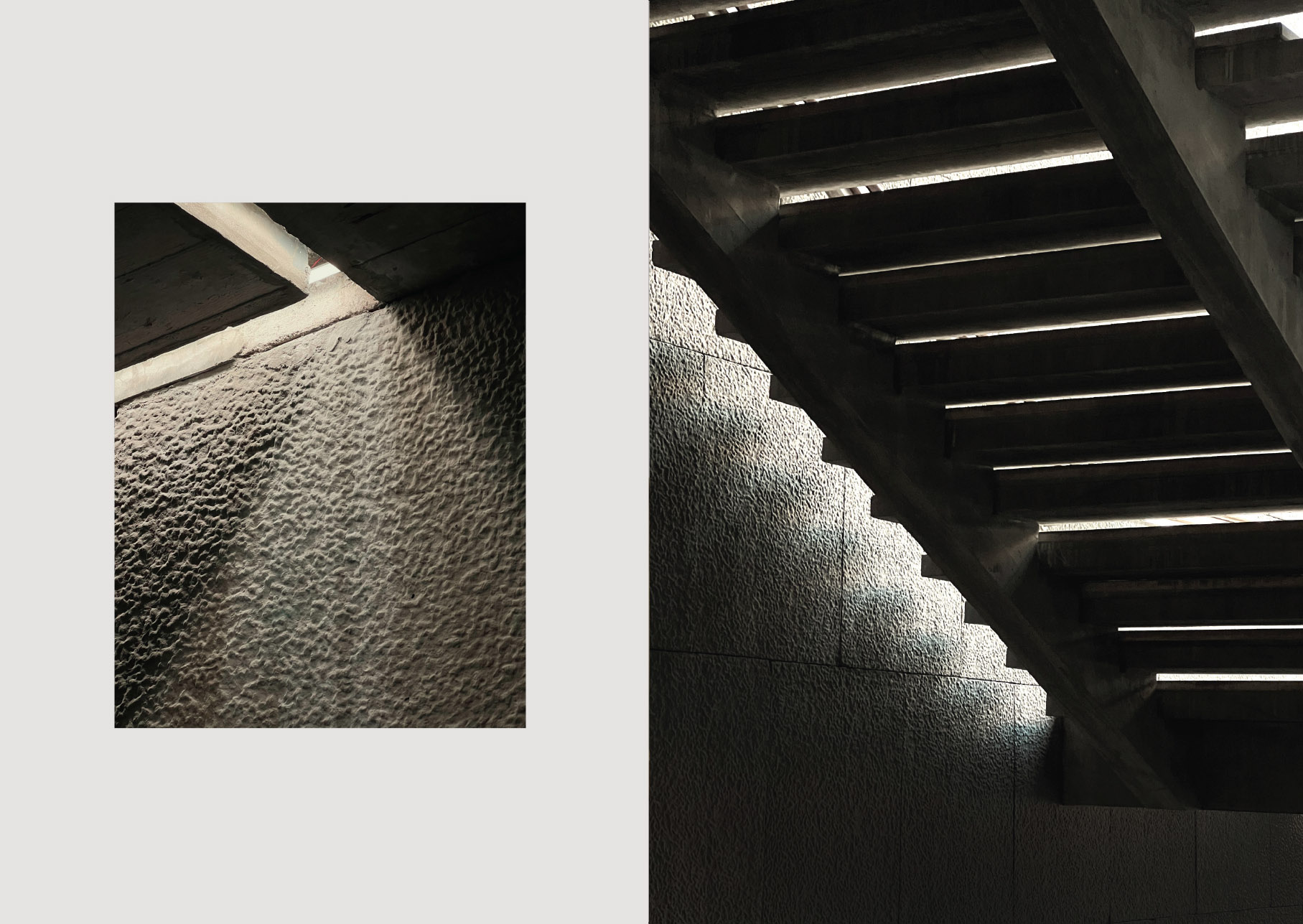Taking into account the principle that the experience of a place is characterised by how you enter it, how you experience it and how you leave it, we sought out to convey the various sensations experienced by those who walk through this space, through the promenade presented as you flip the pages.
Characterised by a large flow of people and a constant coming and going, the metro station at the university campus is an architectural programme with a significant spatial dimension, experience and sound. The sounds perceived here control many of the moments of its spatial perception. The rhythm of the lights combined with the opening of doors, footsteps and voices make up a hectic atmosphere.
Ler mais
After leaving the metro, we realised that although we were in a busy environment, as we walked to our chosen faculty, we experienced the opposite. We find ourselves in an environment that turns out to be more peaceful and serene when in direct contact with the faculty building.
When we arrive at the faculty, we are confronted with a cross-section of movements inherent to the characteristics of that space. Marked by a great deal of agitation due to the movement of people and the influx of traffic.
Characterised by its tough exterior, with only slight light openings, we are invited to enter the Faculty of Economics of the University of Porto through a long mirror of water.
Being greeted by free and wide spaces, we easily realise the central role that light plays in shaping different spaces/moments. An example of this are the interior patios which, as well as allowing natural light in, help to define the interior space, such as the play of light/shadow and emphasising the purpose and function of the building. In this way, the horizontal and vertical lines, assertively geometric, represent the volumes built under the light.
Characteristics such as fluidity and depth create a sense of infinite distance. This sensation is also perceptible in the photographs, through the light that penetrates and composes the building, which occasionally draws moments of different characters. Looking at photographs and admiring the forms that the architect creates through the collision of architecture and light is like reliving the experience of the spaces visited and moving through them without being physically present.
This is what happens when we look at photographs by Lara Jacinto, who was one of our most relevant photographic references from the very start. Throughout her work, she uses a baroque light treatment that is visible in the strong contrasts, both in close-ups and in details, where the warm spotlights stand out against the dim background – light and contrast.
To conclude, we intend to convey, through these records and photographic sequence, one of the essential aspects of architecture: experimentation with space.



